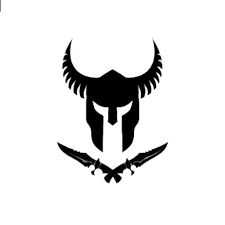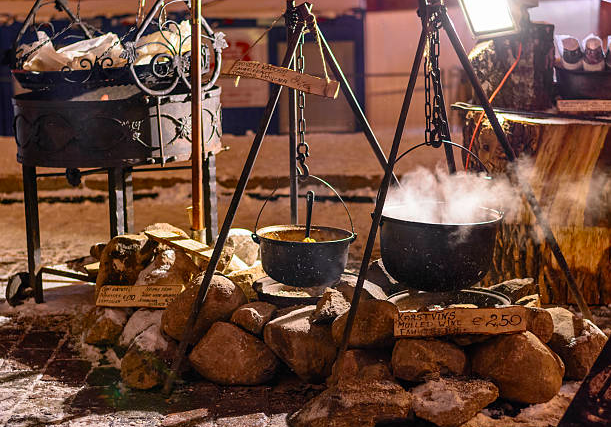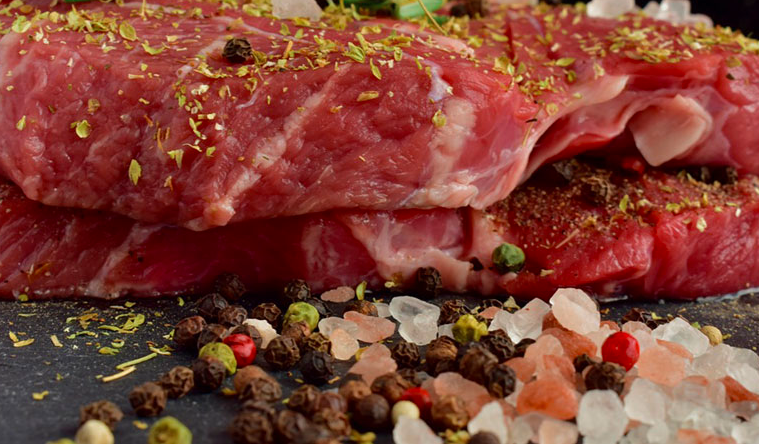Viking cuisine formed the foundation of their formidable energy, and although Viking food differs from today’s fare, they relished a variety of foods and delicious beverages.
Summary
ToggleLet’s delve into our topic and take a closer look at everything related to Viking cuisine.
In fact, Viking cuisine was filled with numerous types of hearty foods, which we will now explore…
What was the food of the Vikings ?
It’s a tough life, sailing around the world and engaging in all those raids. To be honest, staying at home to farm and raise animals to support the family is also a pretty tough life.
Both of these aspects of life must have required a good deal of energy to sustain everyone. But where did this energy come from?
First, it’s worth considering the amount of work required in producing food and beverages in Viking cuisine. Modern culture makes it easy to forget the time and effort dedicated to the food we eat.

Handcrafted Viking stainless steel knife with forged ring
The next thing to consider is a logical conclusion that is often overlooked. Life in Viking times was tough, and a simple life would have required a lot of energy. The fact that the Vikings chose to “waste” their energy on sailing, raiding, and pillaging tells us a lot.
It tells us, above all, that the Vikings ate well. They were able to produce food in the most challenging circumstances. They were skilled hunters, but also farmers, foragers, and even beekeepers !
The Vikings were also very adept at minimizing waste and preserving food to eat during the winter. Most historians agree that the Vikings ate better than peasants in much of the rest of Northern Europe, and many of them dined as well as some kings and queens !
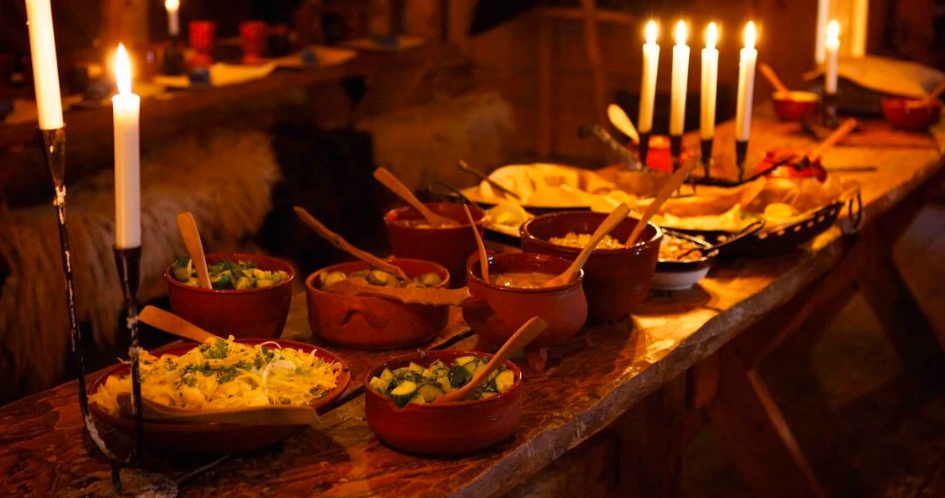
What did the Vikings eat ?
The Vikings consumed various types of meats on a daily basis. A significant portion of their meat intake came from fish, as the Vikings were skilled fishermen. There is evidence that they ate almost everything the sea had to offer, from herring to whales.
It is not believed that the Vikings hunted and caught whales at sea. In fact, the Eddas, written sagas that describe the era, caution against this practice. Instead, it is likely that the Vikings only appreciated whales when they washed ashore and died.
On land, Scandinavian farmers raised cattle, sheep, goats, pigs, and chickens. Except for pigs, most of these animals were raised for their milk and eggs. The Vikings did not slaughter them and only consumed them during the winter to avoid having to feed them during the cold months.
The Vikings were also skilled hunters and hunted a variety of animals, including rabbits, reindeer, and possibly even bears !
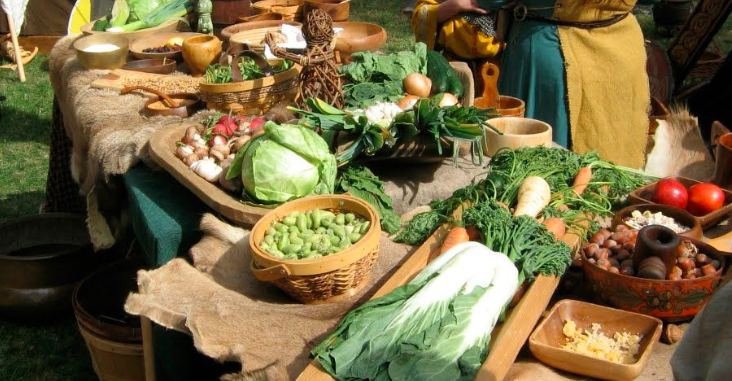
What Did the Ancient Scandinavians Eat at Sea ?
It’s relatively easy to sustain oneself on land when you know what you’re doing, have access to Scandinavian cuisine, and adhere to the traditions passed down through generations. But how do you ensure a decent food supply on a Viking ship?
It’s important to remember that the majority of Viking maritime missions were actually quite short. Extended journeys lasting several months were exceptionally rare.
However, they still needed to eat, even if it was just for a few days, to have the strength for raiding and pillaging upon arrival!
They actually had a similar approach to that of winter. Preserved foods that don’t spoil over extended periods, such as dried fish, were common. Grains can also last a long time if stored properly.
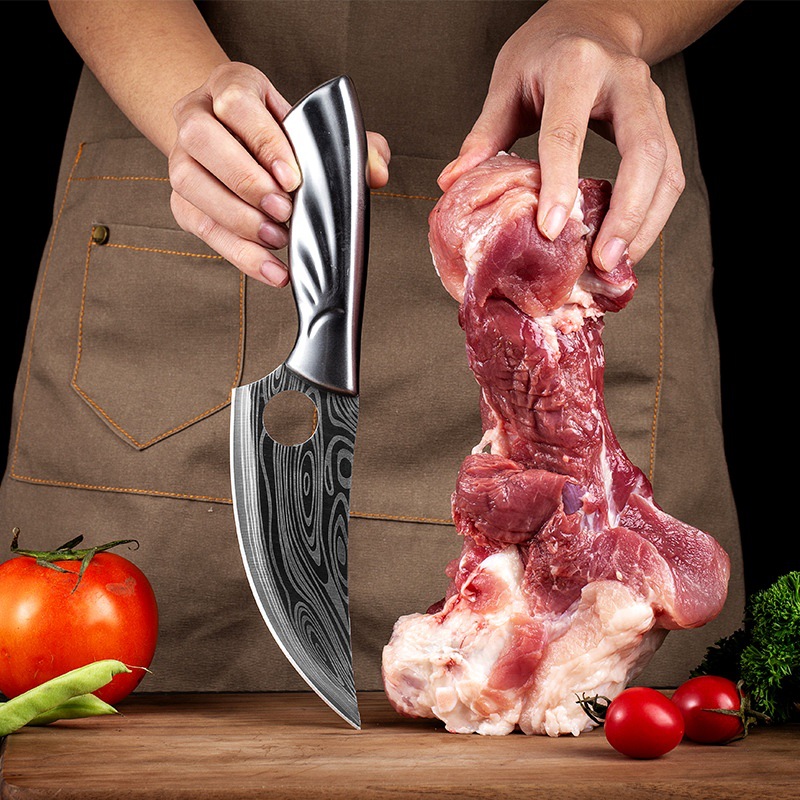
Stainless Steel Viking Bone Kitchen Knife
Of course, if it was the right time of year, it was possible to catch fresh fish and cook it.
So, the Vikings were able to enjoy proper meals to keep their energy levels high, both at sea and on land.
The Viking Diet : “Foods in Viking Cuisine”
Cereals and Nordic Bread :
- Rye
- Barley
- Wheat
- Spelt
- Oats
A significant part of the Viking diet consisted of cereal products such as bread and porridge. Bread was enjoyed at every meal, but it didn’t quite resemble the bread we eat today.
Barley was likely the most common cereal. It grows easily in various regions. Other cereals like rye, spelt, and oats were also cultivated, and in some parts of Scandinavia, it may have been possible to grow wheat.
Barley ground with water, and perhaps a bit of salt for flavor, was cooked just before eating, creating flatbreads or possibly thin rolls. These unleavened bread types became very hard once cooled, so it wasn’t really possible to prepare large quantities in advance.
Some Vikings may have made leavened bread using a process similar to sourdough in Viking cuisine, although direct evidence of this is challenging to find.
Scandinavian Meat and Fish :
- Cattle and sheep
- Pork and chicken
- Goat
- Horse
- Wild boar
- Moose
- Roe deer
- Deer
- Hare
- Saltwater fish
- Freshwater fish
Viking cuisine featured a wide variety of different foods, and they had mastered their menu. Fish, particularly herring, often graced the Vikings’ tables. They also consumed a lot of stockfish and dried fish. Whales and seals were part of their diet as well. And believe it or not, they enjoyed sandwiches made with thick slices filled with a kind of butter and meat from boars, deer, moose, or even bears. Honey was frequently used as a sweetener in these dishes, and they liked to sweeten soups too, often adding honey, and sometimes seasoning them with garlic.
Many ingredients were similar to those used today, but they might have held a different status. For example, horse meat was considered a delicacy and was only served on special occasions.
Viking Dairy Products :
- Milk
- Sour milk
- Cream
- Eggs
- Cheese
As mentioned earlier, the Vikings primarily raised animals for their milk and only used them for meat when they stopped producing.
You probably know if you’ve ever accidentally left a carton of milk outside in the morning and returned home after work: without refrigeration, milk spoils very quickly. But the Vikings knew how to extend the shelf life of their milk by creating…
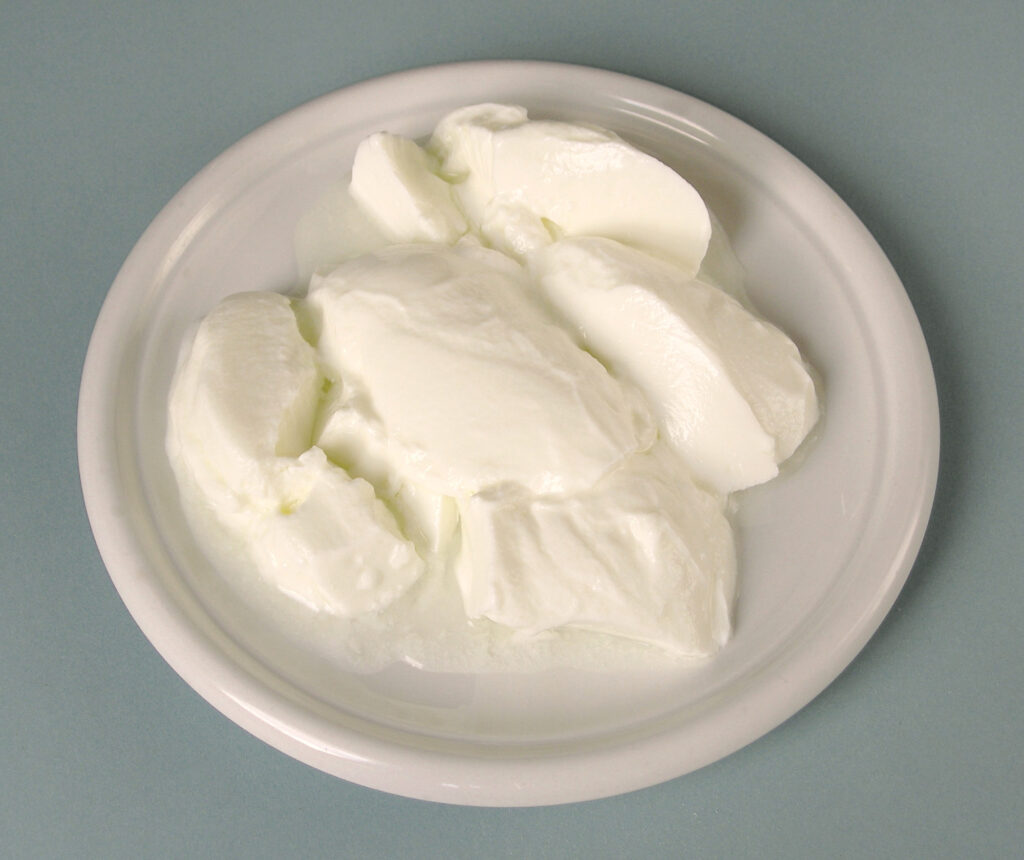
Apart from the obvious milk, which was consumed, one of the main things they did was make butter. Usually, this was done using the cream that naturally rises to the top in regular milk. In a modern kitchen, you can turn a pot of cream into butter in about 10 minutes or so. In Viking cuisine, it required hand-churning for several hours.
Once you’ve made your butter, there’s buttermilk left. It’s a rich, slightly sour-tasting, nutritious drink. It needed to be consumed fairly quickly after its formation, but there was likely quite a bit left as butter-making was a very frequent task.
Northern people also made cheese from their milk. They wouldn’t have been able to age them to create, for example, a sharp cheddar or a tangy blue cheese. These were more like soft, high-fat cheeses, akin to mozzarella or paneer.
Vegetables in the Viking Age :
- Cabbage
- Peas
- Beans
- Onions
- Garlic
- Carrots
- Angelica
- Nettles
The Vikings wouldn’t have known year-round, readily available produce like we have today due to modern greenhouse cultivation techniques. They did, however, have a fairly wide range of vegetables in Viking cuisine. Everything from onions and wild garlic to carrots and angelica.
They also consumed root vegetables like beets, which store very well, often simply left in the ground to see them through the winter months.
Carrots were also part of the Viking diet, although it’s unlikely they encountered our modern orange varieties. Back then, carrots came in various colors, but most often white or purple.
As for leafy green vegetables like lettuce, we don’t know if they cultivated them themselves, but we do know they were part of their diet. It’s more likely they were foraged in the wild, as edible greens tend to persist from year to year.
Northern Fruits and Nuts :
- Blueberries
- Raspberries
- Strawberries
- Cranberries
- Elderberries
- Wild blackberries
- Blackberries
- Hazelnuts
- Apples
- Pears
- Plums
- Cherries
- Sour cherries
- Walnuts
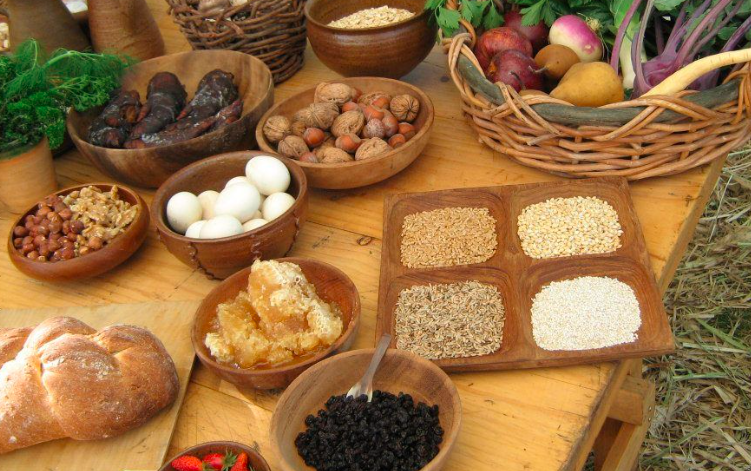
As far as we know, the Vikings did not cultivate fruits themselves. However, we do know they enjoyed a wide range of fruits in their diet. Although many fruits were much more sour or bitter than today, we know the Vikings appreciated them:
Orchard fruits like apples and pears were fairly common in most Scandinavian countries at the time. Cherries and plums were also available.
Berries, such as lingonberries, blackberries, and raspberries, were abundant and easy to forage. The fruits were consumed fresh or dried.
The only nuts we know the Vikings enjoyed in their own environment are hazelnuts. They did appreciate walnuts, but those came from external trade.
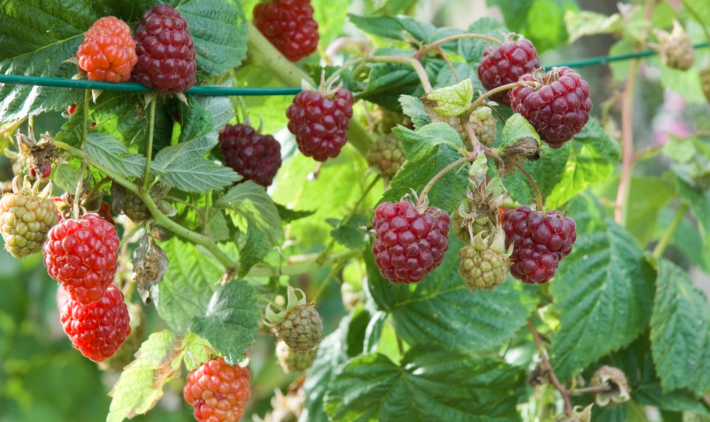
Herbs and Spices from the Nordic Lands :
- Juniper berries
- Angelica
- Nettles
- Elderflower
- Mustard seeds
- Caraway
- Thyme
- Oregano
- Lovage
- Hyssop
For most of human civilization, salt has been the primary seasoning. It’s readily available wherever there is a coastline due to the evaporation of saltwater pools. We also know that the Vikings cultivated, or at least gathered, herbs and spices to season their food.
Anyone familiar with Norway knows that dill was one of the herbs they cultivated. It’s also likely they consumed mint, parsley, watercress, and thyme. They probably knew about horseradish and mustard too.
We know that as the Viking Age progressed and the Vikings came into contact with Eastern civilizations, they were avid users of more exotic spices like pepper and cinnamon that arrived via the Silk Road.
There’s no indication that poor-quality food or cuisine was accepted in the Nordic era. Spices were available and used not to mask the taste of spoiled food, as is commonly believed, but to enhance the flavor. As it stands, it’s entirely possible that a varied and nourishing diet was available.
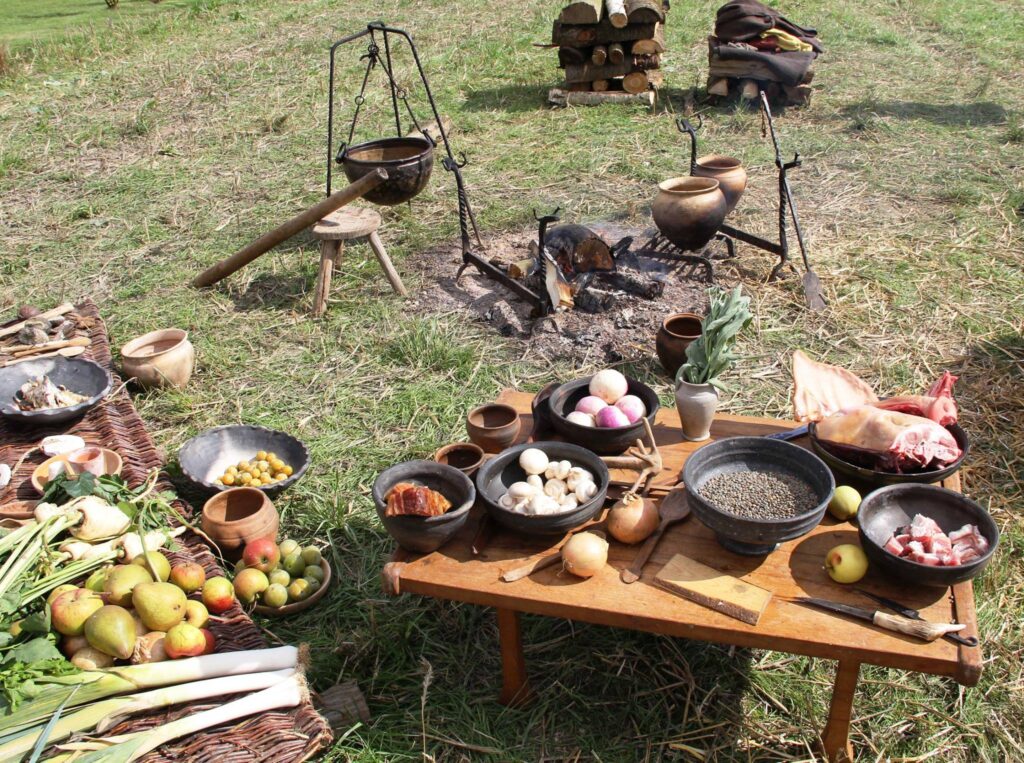
Viking Beverages : Unique Nordic Cocktails
- Beer
- Syra (a type of sour milk)
- Mead
- Fruit wine
- Grape wine

Viking Beer :
In addition to milk and water, which were the basic beverages in Viking cuisine, they were also fond of beer and mead.
Scandinavian beer was made by fermenting barley with water to produce an alcoholic beverage. They likely knew about the addition of hops to impart flavor. The beer produced using these methods would have been relatively weak by modern standards, but it could have been safer to drink than some of the water!
Mead :
Mead, the favorite drink of the Vikings, is a type of Viking alcohol similar to wine made from honey. Because there is a lot of sugar, you get a stronger Viking drink than beer. Mead has experienced a resurgence in some parts of Europe recently, with the opening of several meaderies.
It’s also likely that the Nordic people made wines from other fruits. At the time, it wasn’t possible to grow grapes locally, and “true wine” had to be imported from other parts of Europe. But we know that the Vikings enjoyed real wine when they had it on hand !
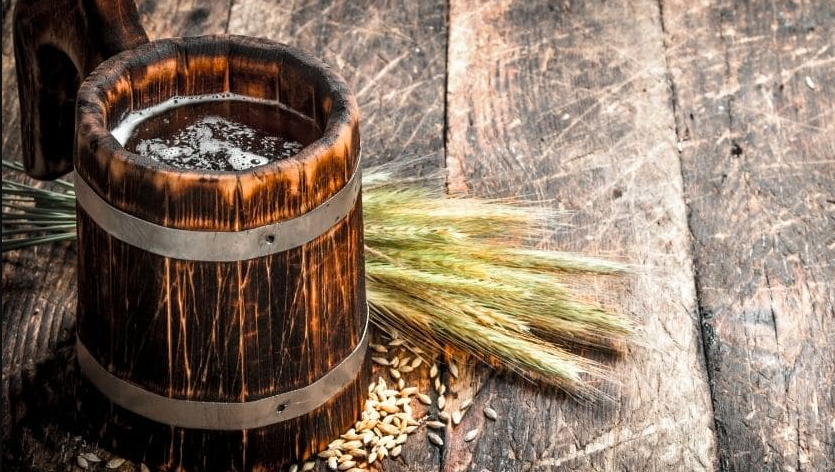
Viking Meals and their Banquets :
Putting it all together, we can get a fairly clear idea of Viking meal times. They had two meals a day: a hearty breakfast called “dagmall” (daytime meal) and a substantial dinner called “natmall” (yes, you guessed it, nighttime meal):
First Viking Meal :
For “dagmall,” adults likely had a leftover stew, especially the thick layer of animal fat that had formed on top, along with fresh bread. This provided them with energy for the day’s work. Children’s “dagmall” was probably porridge, possibly sweetened with honey and fruits.
Second Viking Meal :
“Natmall” was usually a stew that had simmered for most of the day in the Viking kitchen, with available meat and vegetables. It was common for the stew, called “skause,” to be in a constant state of replenishment and last for several days. Each day, new ingredients were added to the pot to replace what had been consumed the day before. The near-constant cooking helped break down any tough meat and ensured there were no germ issues. Flatbreads with honey and fruits would have been their treats at the end of the meal. Everything was washed down with beer, mead, and buttermilk.
Viking Banquets :
Viking banquets occurred about three times a year – probably in spring to welcome the end of the long winter, in autumn to celebrate the harvest, and at an intermediate time. The feasts included the usual foods but in larger quantities and variety. This was when they could roast meat on a spit rather than simply stew it. The feasts lasted several days and likely featured much more alcohol than usual !
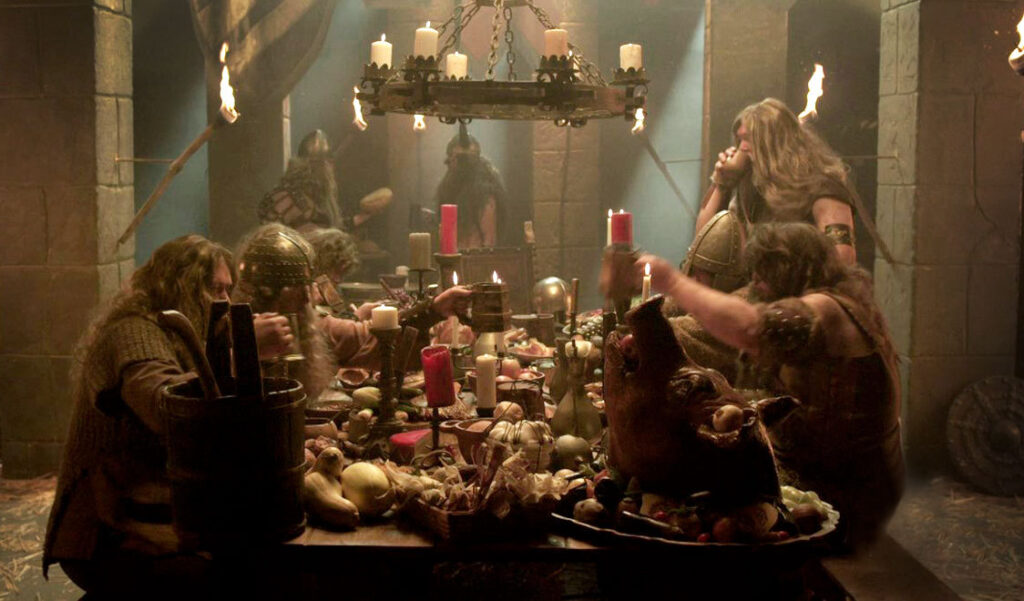
Dining among the Vikings :
Many tools have survived ancient history and were typical of households in the Middle Ages. These tools would be surprisingly familiar to most people today because Nordic cuisine was quite advanced, and they ate their food with handmade utensils and wooden skewers that resemble those we use today.
Once prepared, the meat and other ingredients used to make Viking stew were boiled in an iron, clay, or soapstone pot over the “máleldr” or “meal fire,” which was the hearth used for cooking.
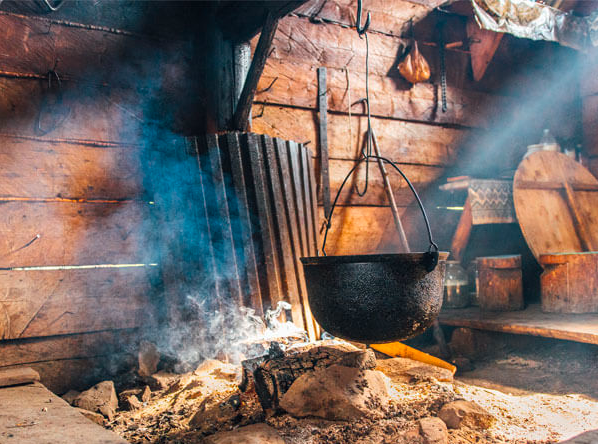
Kitchen utensils of the Viking Age :
Most households in Viking cuisine had some form of table, and wealthier families used a linen tablecloth. Meats were served on wooden trenchers and eaten with the personal Viking knife. Stews, porridges, and similar dishes were served in wooden bowls and consumed with wooden or horn spoons. Shells were used as ladles and spatulas.
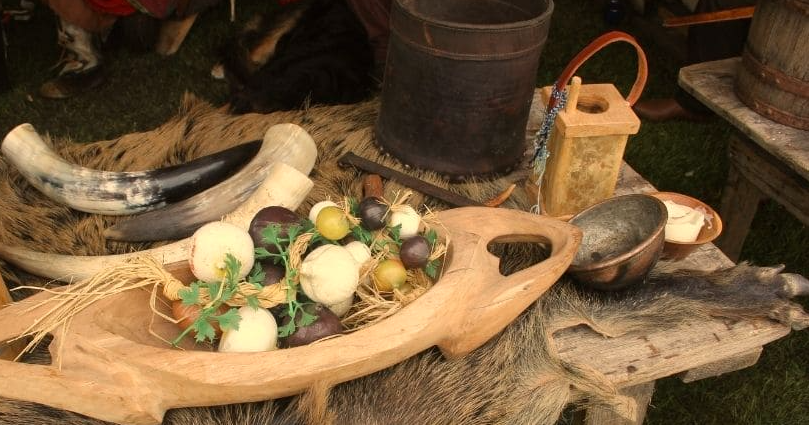
Viking kitchen knife :
The use of knives in the Viking Age was widespread, including in Viking cuisine. So, consider this authentic Viking kitchen knife forged by our specialists.
Viking drinking horn :
Drinking horns made from cow and aurochs horns are probably the most iconic and well-known vessels from the Viking Age. They also appear in written sources during feasts and ceremonies and are represented in iconography.
Horns are considered an important part of equipment in Viking cuisine, where feasts and formal entertainment played a major role. In poems, Viking horns are used for drinking mead and wine, while they are also used for beer in the sagas. One primary function of these prestige objects was to allow their owners to demonstrate their status by offering unlimited hospitality, echoing the hospitality obligations mandated by law.
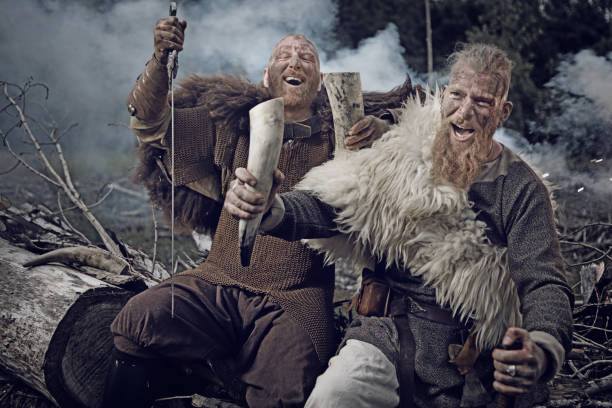
Food preservation in Nordic cuisine :
Autumn was the season when the greatest variety of foodstuffs was available. It was the time when freshly slaughtered meat was most abundant, fresh vegetables and grains were available, and imported foodstuffs were most abundant in Viking cuisine. Festivals and celebrations were planned in the autumn to take advantage of this abundance and variety.
Meat and fish were preserved by smoking. While some excavated Viking Age farms seem to have had dedicated smokehouses, like the Granastaðir farm in northern Iceland, the upper part of the longhouse may have been smoky enough to do the job. Smoked lamb hanging from the beams in the Viking kitchen at Eiríksstaðir. Despite its unappetizing appearance, the meat is delicious.
Another method of preservation is drying. The dry, cold wind removes moisture and preserves fish before it spoils. Large tubs found at some Viking housesites contained meat preserved in sour whey, as well as other dairy products stored. A reconstructed dairy vat in the house at Stöng in southern Iceland. Comparing the size of the handheld bucket on the table to the partially sunk dairy vat gives an idea of the size of these tubs and the large quantities of stored goods they could contain.
